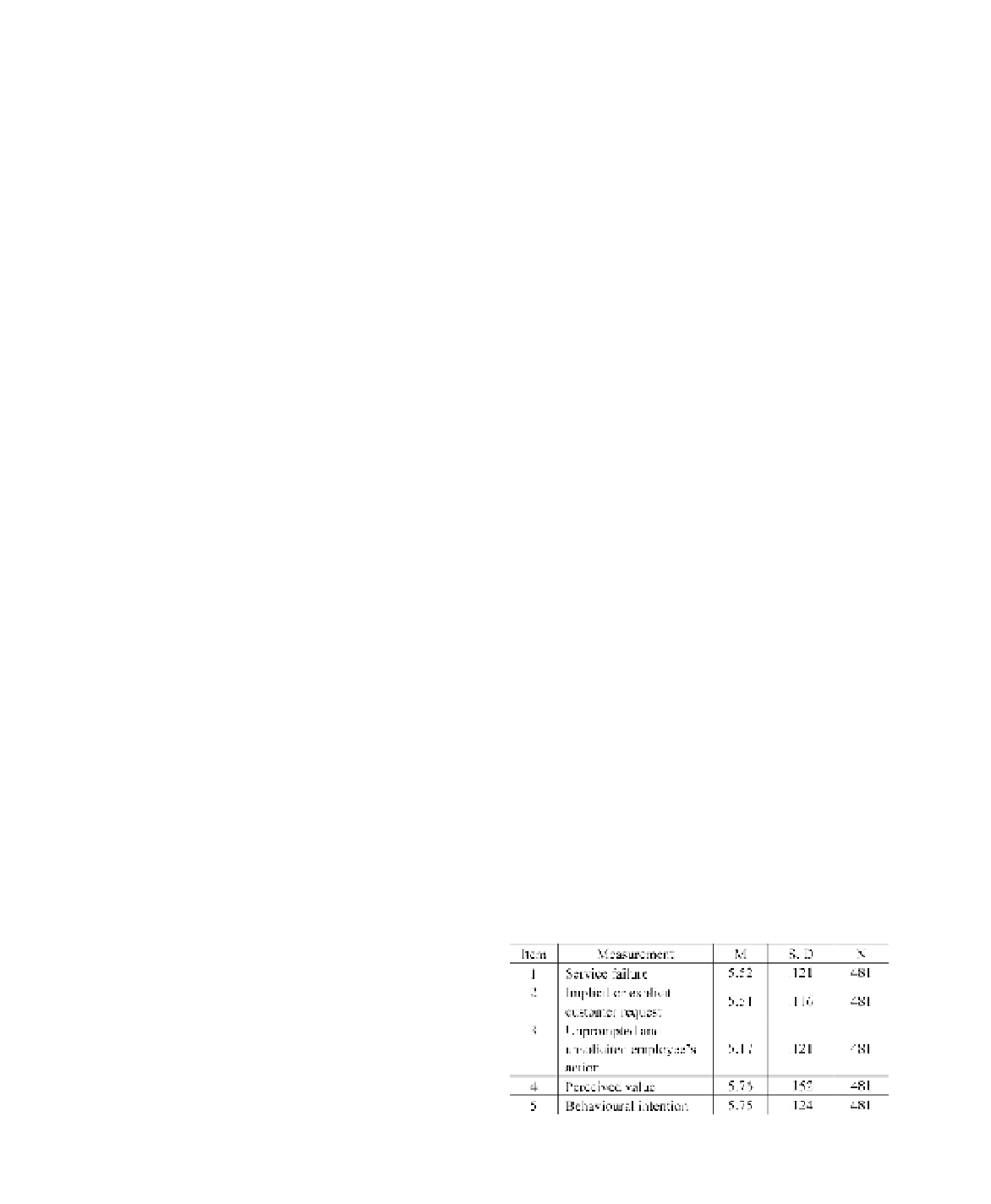Travel Reference
In-Depth Information
from two perspectives which is functional and sym-
bolic dimensions. Functional value can be described
as a thorough evaluation of value incorporating qual-
ity, the customary value for money and convenience
characteristics. This type of value represents the cus-
tomer's perception of quality in terms of goods and
services received from the coffee outlet, the price paid
for those goods and service, and the time saving to
receive them. Symbolic value on the other hand can
be thought as overall representations of experiential
value perceived from the social, affection, the aes-
thetic, and reputation aspects. This value represents
the customers' impression on others, perception of
delight or pleasure, enjoyment of the visual appeal,
and reputation of outlet, involved with the consump-
tion experience. Customers who had a bad experience
will still revisit and remain loyal to the restaurants that
have positive perceived values. Positive perceived val-
ues will influence the customers to devour and repeat
their purchase behavior without having treated with
service recovery (Chen & Hu, 2010).
4
RESULT AND ANALYSIS
4.1
Descriptive statistic
Table 1 shows the overall mean score of each
dimension. The majority of the respondents agreed
that service delivery system failure is the most inci-
dents occur in the Malay restaurant (M
5.52,
S.D, .121). With the frequent human interaction
in the restaurant establishment especially during
lunch and dinner, the failure that consists of “food
out of stock”, “unpleasant smell”, “long waiting
time”, “unpleasant food presentation”, “unbear-
able noise level”, and “inconsistent service” rated
highly by the respondents.
The next highest average rating given to implicit
or explicit customer request (M
=
5. 51, S.D, .116).
This incident usually occurs because of the spe-
cial request made by the customers, especially that
involve changing the order and modification of a
meal (less sugar/salt). Other than that, failure to
provide baby chair and no menu card also catego-
rize in this dimension. Nevertheless, respondents
somewhat agree to unprompted and unsolicited
employee's action (M
=
3 METHODOLOGY
5.17, S.D, .121). This rating
contributed by unfriendly employees, inattentive
employees, poor employee hygiene, and improper
dress (not wearing the standard uniform).
There are several items that stood up in perceived
values. This is an indication that a higher percentage
of customers agree with the items pertaining to per-
ceived value. From the table, it can be seen that Malay
restaurant customers keep patronizing a Malay res-
taurant despite inconsistent service delivery due to
several reasons such as food, price, environment, and
convenient location with average mean of (M
=
In the early phase of the study, preliminary inter-
views session done in order to obtain the restau-
rant operators opinion and perception of the
research issues especially in recognizing the exist-
ence of service delivery failures in Malay restau-
rants. Based on the feedback gathered, eighteen
restaurant operators involved in the study stated
that service failure takes place numerously on their
foodservice establishment.
Self-reported questionnaire survey was sub-
sequently developed as a mean to measure the
restaurant customer experience in service failure
and behavioural intention as well as the role of
perceived value. Through convenience sampling
technique, survey the experience of restaurant
customers who had encountered service delivery
failure in Malay restaurants around Klang Val-
ley, Malaysia was undertaken. In other word, only
Malay restaurant customers' with service deliv-
ery failure experience while dining are incorpo-
rated in this study. To have ample response, data
were gathered during lunch hours as soon as the
respondents finish their meals. This approach is
chosen to guarantee the result gathered would be
based on real experiences. To ascertain customers
had gone through such failures, a couple of simple
questions asked, for instance;
have you ever dined
in Malay restaurants and have you ever experience
service delivery failure
. If the response is yes, a set
of questions was then preceded. The data collec-
tion process accomplished within a phase of three
months (February-April 2012), and 481 respond-
ents were successfully surveyed.
5.76,
S.D, .152). There are two items that reflect on food
as the basis of visitation to the restaurant namely
due to Malay restaurant providing exquisite food,
and due to the excellent taste of food. The customer
also agrees that they patronize the Malay restaurant
due to soothing environment, aesthetically appealing
=
Table 1. Mean and standard deviation for service deliv-
ery failure, perceived value and behavioural intention
measurement.
Note
: CI = Confidence interval; LL = lower limit, UL =
upper limit Likert-scale. 1-strongly disagree to 7-strongly
agree.




Search WWH ::

Custom Search